Learn how to whisk up a perfect cup of frothy matcha. I'll walk you through the traditional Japanese way to make matcha step-by-step (with videos). Use the exact same whisking process to make your matcha latte or iced matcha.
Jump to Recipe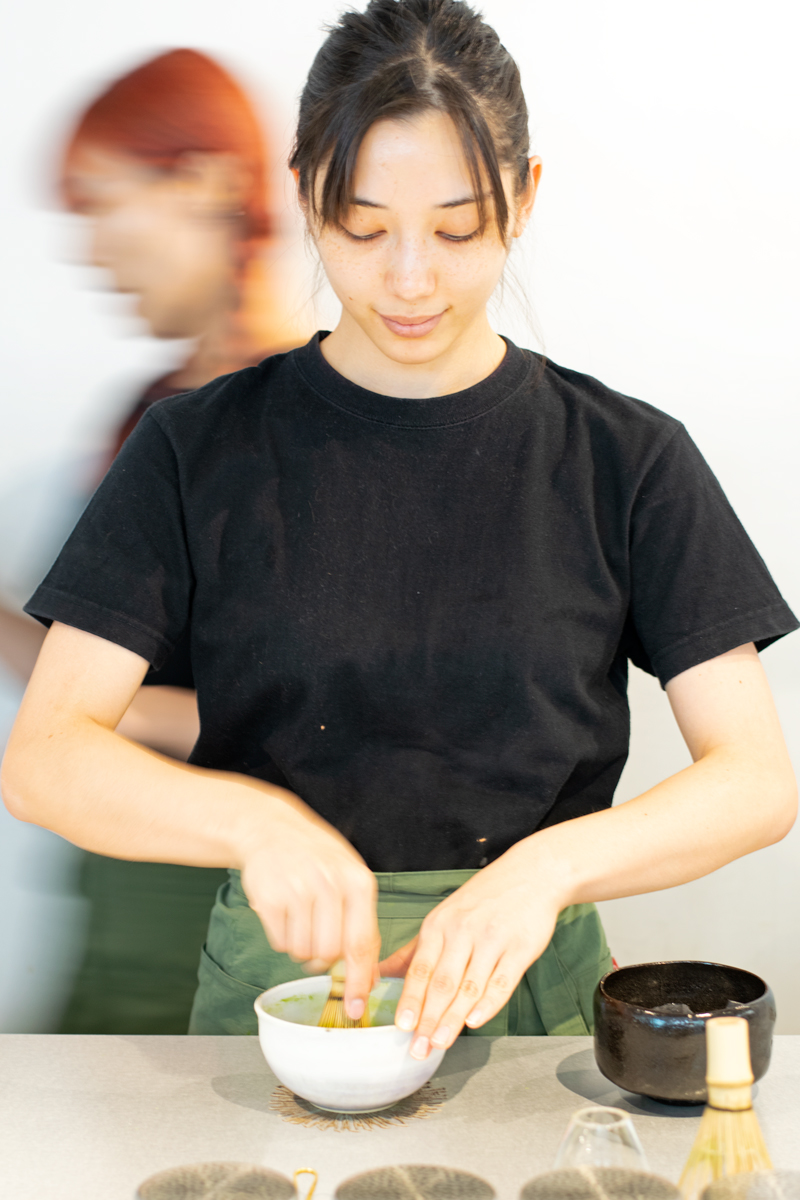
Before you use a new tea whisk for the first time
You ordered your bamboo whisk. You removed it gently from its plastic cylinder-shaped case or box.
Now what?
Before you use it, you should wash it lightly with water.
It's better not to rinse your tea whisk directly under the faucet. If it comes in contact with your faucet, mold could grow on your whisk.
Instead, fill a bowl with water. Cold water or warm water is fine. It doesn't have to be boiling hot.
Gently whisk the water back and forth with your new whisk.
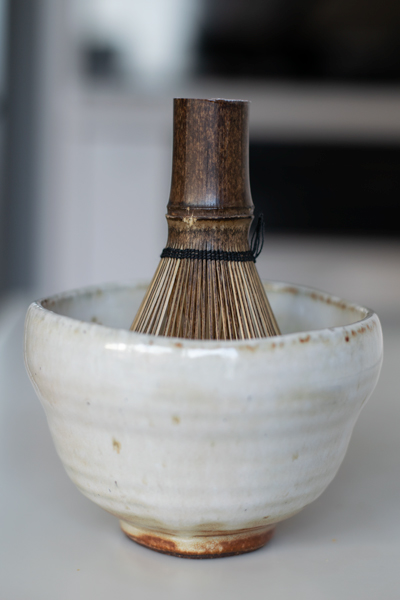
IMPORTANT NOTE: Before the first time you use a new matcha bamboo whisk, soak the "bloom" of the whisk in hot water for a couple of minutes.
The hot water will cause the curled ends of the tines to straighten. This softens the tines so they become more flexible and less likely to break.
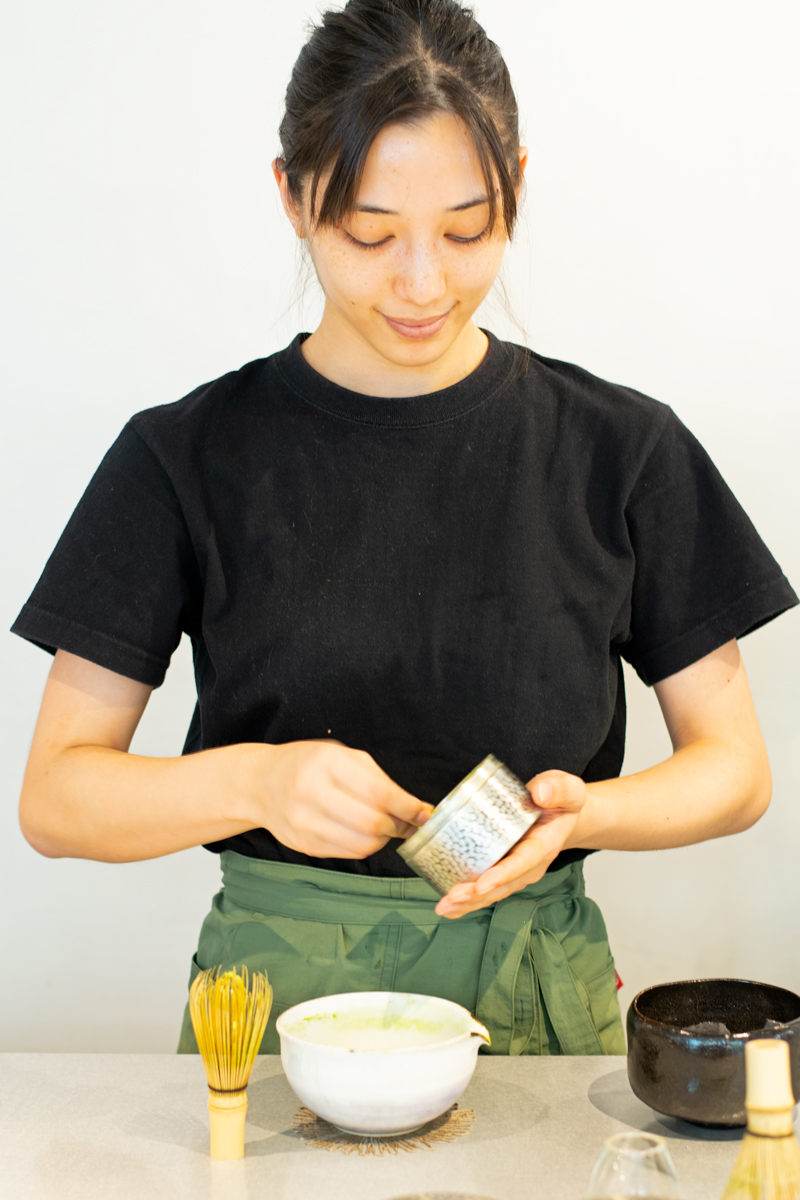
What You'll Need to Make Matcha
Ingredients:
- water
- good quality matcha powder (not low-cost matcha for baking)
Essential tools:
- kettle
- measuring spoon
- chasen (bamboo matcha whisk)*
- small bowl
*If you don’t own a bamboo whisk, there are some alternatives.
Non-essential matcha accessories:
The following are very pretty and nice things to own. Do you absolutely need to go out and buy them right away? No.
- chashaku bamboo spoon
- matcha sifter/sieve (furui)
- ”whisk shaper” (kusenaoshi, often called a bamboo whisk holder or stand)
- chawan (matcha tea bowl)
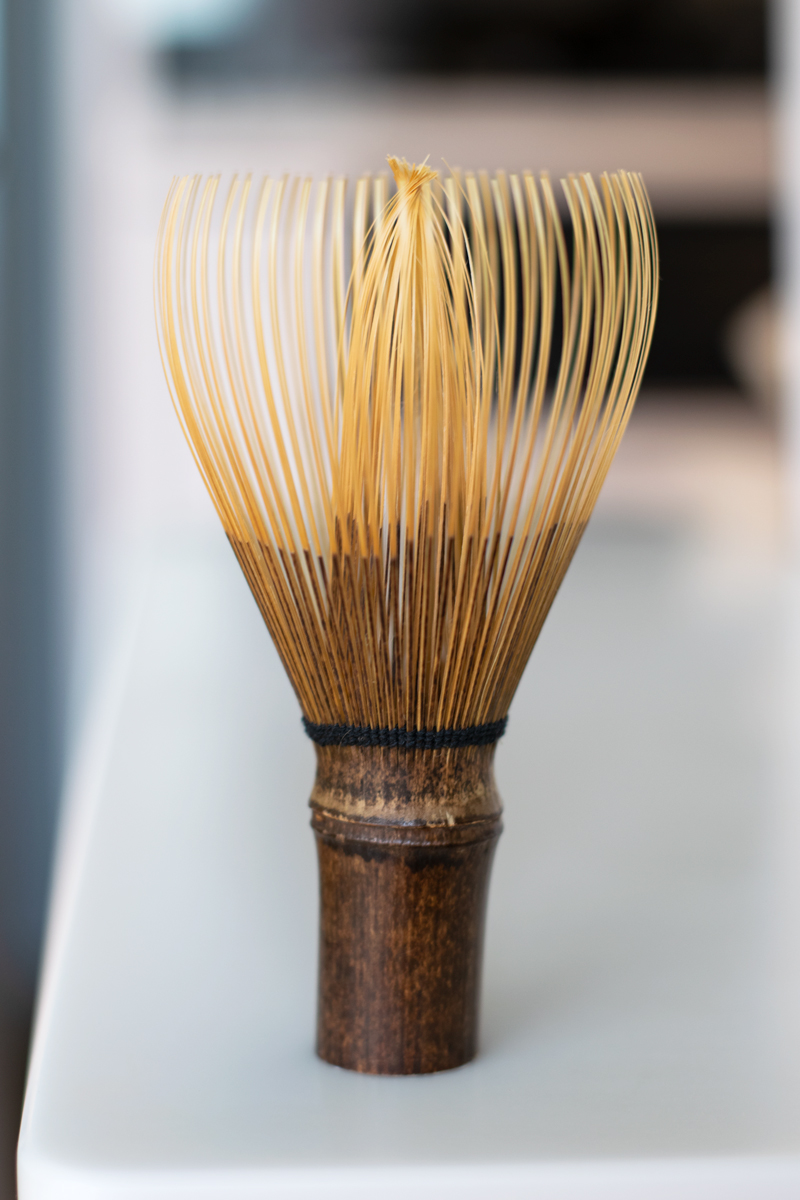
Traditional Bamboo Whisk
This traditional matcha tool is called a chasen in Japanese.
Each whisk is made out of a single piece of bamboo. A chasen looks similar to a standard metal whisk except with bamboo tines. When you pick one up, you’ll also notice how lightweight it is.
The highest quality chasen are handcrafted in the small village of Takayama in Nara Prefecture.
Initially, investing in a high-quality, authentic chasen is unnecessary. They’re handmade = expensive.
The cheaper alternatives are typically mass-produced by machines outside of Japan.
If you are shelling out $50 or more for one, just make sure it’s from Takayama.
If the package has a "Made in Japan" sticker, you should be able to trust the quality.
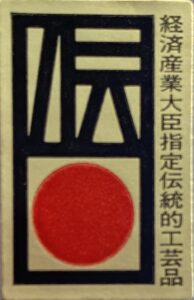
Why whisk matcha with bamboo?
If you want that bubbly froth, you basically need to invest in a bamboo whisk.
No alternative to a matcha whisk is going to compare.
On top of that, there’s something very special about holding a traditional tool that’s been used for centuries. Even watching someone whisk matcha, I find it very calming.
The feel of bamboo can’t be replaced. If you’re using an electric frother, you’re missing out.
Hearing the sound of bamboo tines swish back and forth is part of the whole experience.
It’s the "way of tea". Matcha is so much more than a drink. In Japan, it’s a ritual. The process, not just the drinking part, is sacred.
Can I use a regular whisk for matcha?
Yes, you can still make matcha without a bamboo whisk.
Will you get the same results as if you had used a bamboo whisk?
No.
Using a regular whisk, you will have a difficult time aerating the matcha and getting a smooth consistency.
You won't be able to get the same froth. And you'll have a hard time breaking apart the clumps of matcha powder.
If you don't have a bamboo whisk or you're on the go, I recommend the "shake method".
Add matcha and hot water to a jar with a lid, like a mason jar, and shake.
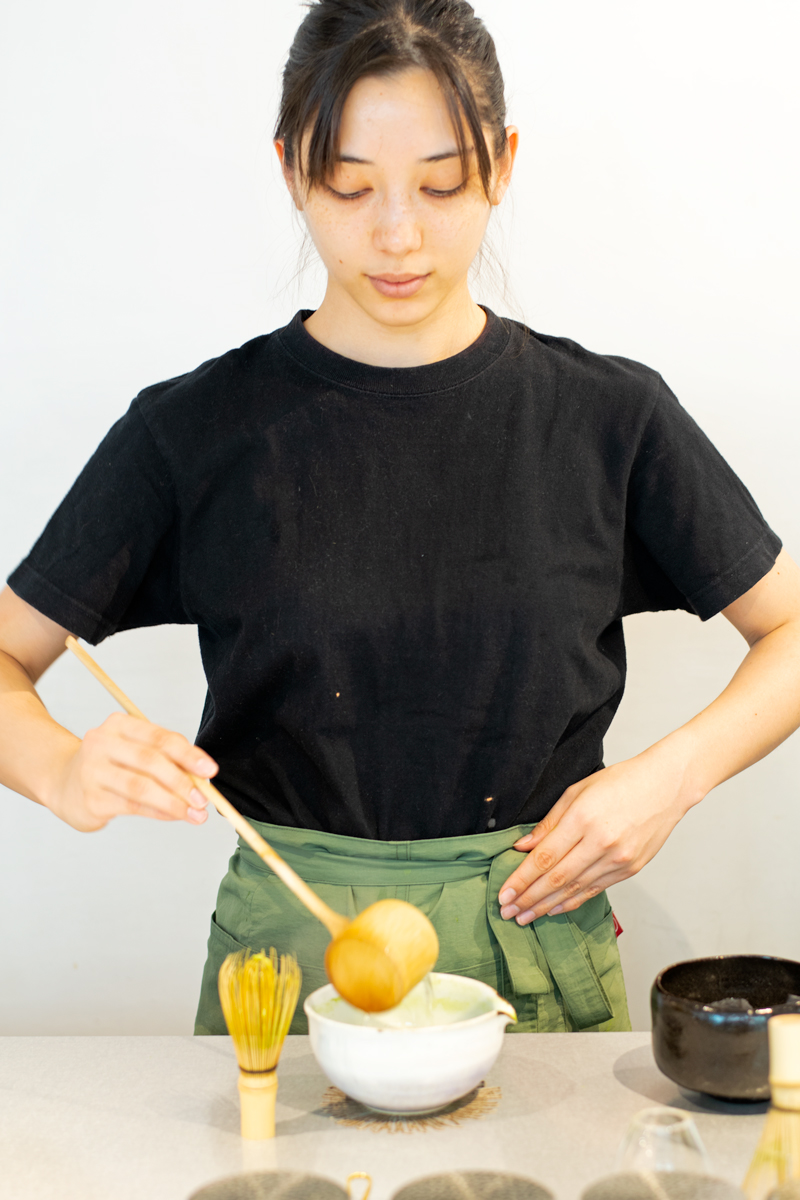
How to use Matcha Whisk
I'm going to teach you how to whisk matcha the traditional way.
If you want to learn how to use a matcha whisk for the first time, I'll walk you through the basics.
The traditional method of making matcha in Japan is not complex.
I recommend you read the simple steps below, watch the two short videos, and practice.
Imagine your wrist as a hinge: go back and forth, back and forth. Once bubbles start to form, you whisk a zigzag pattern, like you were drawing a 'M' or 'W' on repeat.
After the foam has formed, sweep the whisk across the top of the matcha in a circle. This settles the foam. Finally, gently lift the whisk from the center.
Japanese Tea Ceremony
Watching someone who's dedicated years to Japanese tea ceremony is an awe-inspiring experience.
I would have never imagined something as simple as making a cup of tea could be so stunningly beautiful.
To make matcha in an aesthetically pleasing way takes years of practice.
But to start off, you don't need a master! If you have the skills to make scrambled eggs, you can make a delicious cup of matcha.
For best results, I wholeheartedly recommend you learn to make matcha the traditional Japanese way.
And as we learn from Zen Buddhism, have a "beginner's mind" to learn something for the first time.
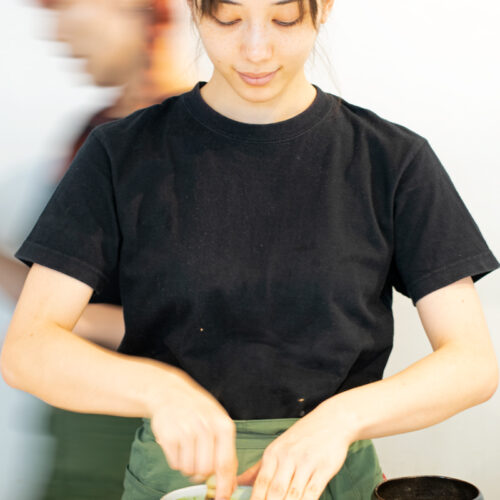
How to Whisk Matcha with a Chasen
Ingredients
- 2 oz hot water
- 1 teaspoon matcha
Instructions
- Boil water in a kettle.
- Gather your tools together.
- Pour the water into an extra cup and let it cool down for a minute or two.*
- Add 1 teaspoon matcha into a chawan "tea bowl".
- Hold the tea bowl down firmly against the counter with your non-dominant hand.
- Whisk briskly in a back-and-forth motion with a bamboo chasen (whisk).
- Once bubbles begin to form, whisk in the shape of a "M" or "W" (about 15 times).*
- Finally, sweep the whisk across the top of the matcha in a circle to settle the froth and bubbles. Gently lift out the whisk from the center of the bowl.
- Your matcha is ready to drink. You can drink directly from the cup or pour it into another cup.
Notes
Care for your Tea Whisk After Using it
It's important that you take good care of a handmade tea whisk after using it.
Reading this section will hopefully save you the pain in the wallet of having to buy a new one!
If you want your whisk to last as long as possible, I recommend that you take care of it like it's your baby.
Treat it as gently as you can. The tines are fragile. Bamboo is a raw material, making it susceptible to getting moldy.
Cultural note: Respect (kei), is one of the four principles of a Japanese tea ceremony.
Treating your matcha whisk with the utmost care shows respect to the master craftsman or craftswoman who made it, to your guests, and to the tool itself.
Unsurprisingly, Marie Kondo's grandmother was a tea ceremony teacher. Imagine Marie Kondo caring for a traditional chasen. That's how it's done.
How to Clean Matcha Whisk (Bamboo Chasen)
It's important to wash as soon as possible after you finish whisking matcha.
As I wrote earlier, it's better to not rinse off directly under the faucet to prevent mold.
Fill a bowl with water instead.
If necessary, you can rub off the tines with your fingers, as long as you do it very gently.
Start by gently pinching a tine close to the handle with your pointer and thumb. Then, slide your pinched fingers towards the tips.
Again, you must be extremely careful not to bend or break the tines off.
Important notes:
Wash only in water. In Japan, no sponges, scrub brushes, or any kind of soap is used.
A bamboo chasen should never go in a dishwasher.
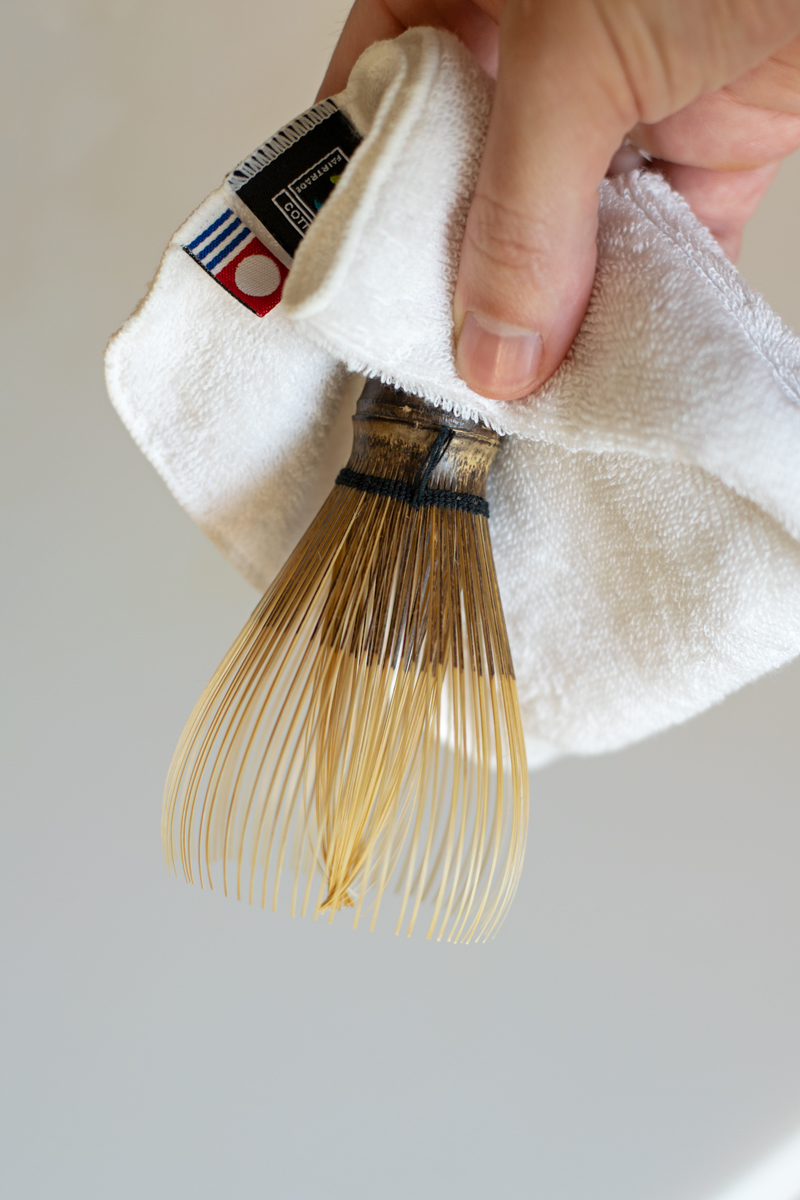
Dry Whisk After Washing
Using a paper towel or clean dish towel, gently dry off the handle of the whisk. Make sure to dry off the bottom of the handle as well.
Then set it to dry in your kitchen. Somewhere shaded and well-ventilated is best.
You can turn it upside down to balance on the base of the handle.
It's recommended to not let it dry on its side. This will cause the whisk to lose its shape.
Important note:
Don't put your whisk back into its original container. You don't want to force it back into its original shape.
If there's not enough ventilation for your whisk to dry, the natural bamboo can grow mold.
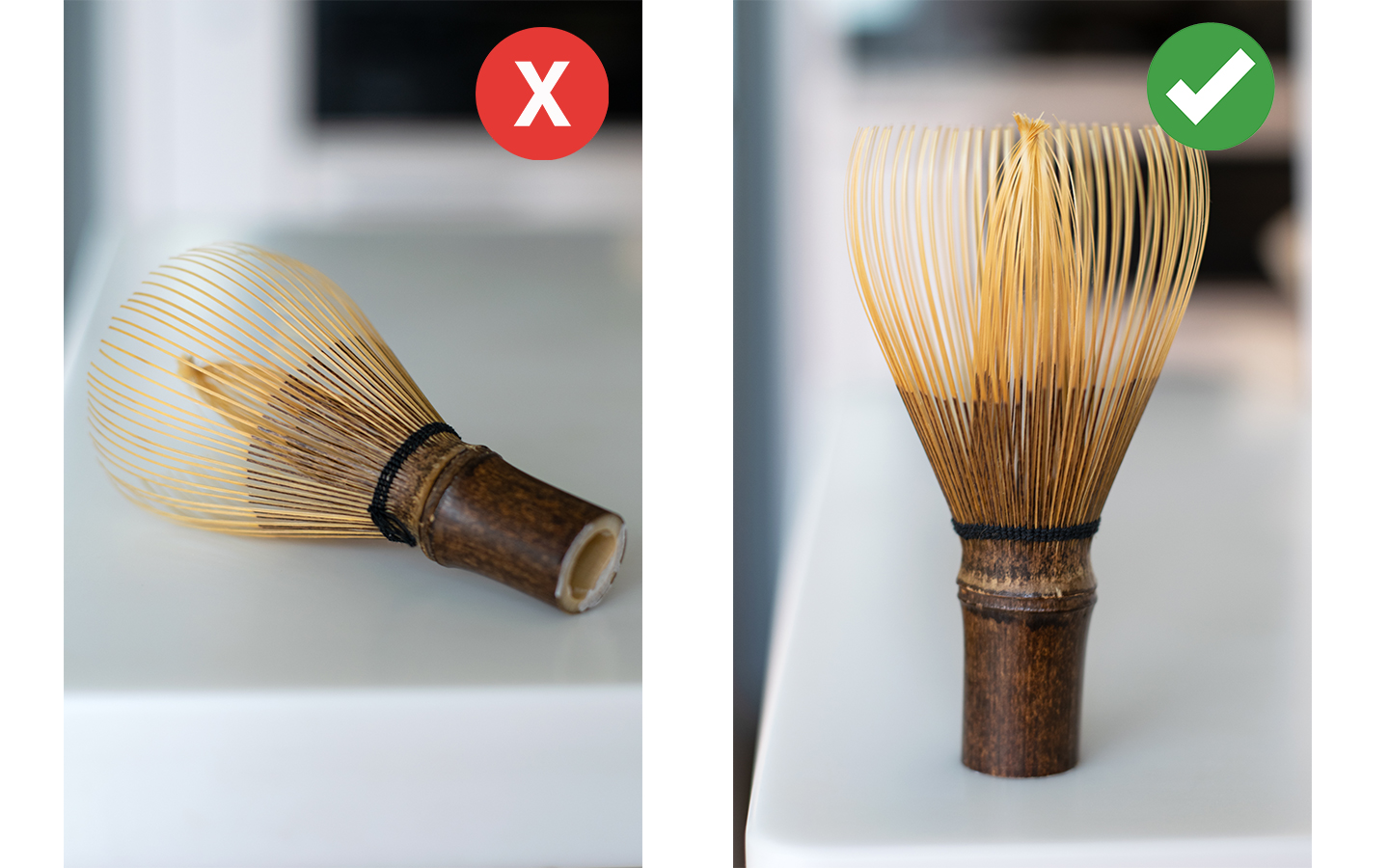
How to Store a Matcha Whisk
Pro tip:
Kusenaoshi often gets called a "matcha whisk holder" or "whisk stand" in English. The more accurate translation is "whisk shaper". It's a tool for readjusting the shape of the tines.
While you can use a kusenaoshi to store your whisk, it's generally advised not to use it for drying. Again, this is to prevent mold from growing on the tines.
Instead, stand it upright on its handle with the tines facing up.
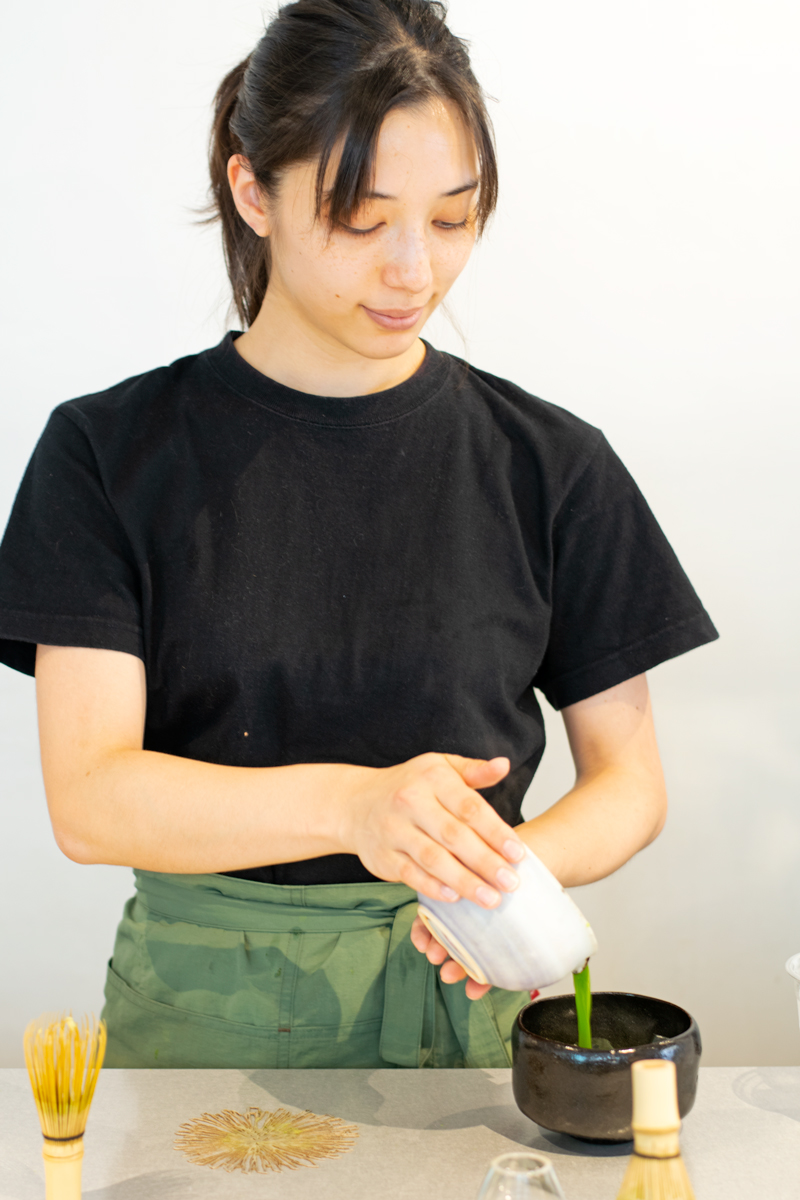
My favorite matcha recipes:
If you're a matcha lover like I am, you'll love these!
Matcha Latte with Coconut Milk
Green Tea Ice Cream (vegan/non-dairy)
Green Tea Shot (with matcha/non-alcoholic)
Matcha Dessert Takoyaki (gluten-free/low-carb)







Leave a Reply